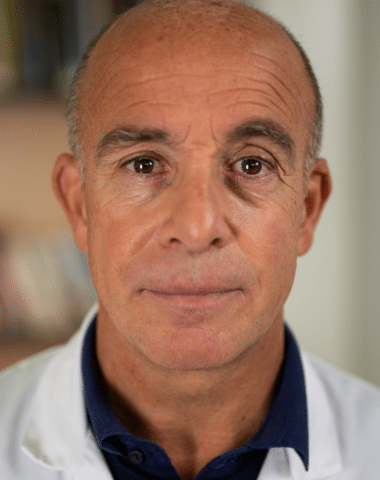Personalised, preventive, predictive, participatory: the 4Ps of tomorrow’s medicine
- Medicine is evolving, moving from a curative approach to a more preventive practice.
- 4P medicine (personalised, preventive, predictive, participatory) is emerging to treat the underlying causes of disease and promote overall well-being.
- Technological and interdisciplinary advances are essential for the collection and analysis of health data, promoting personalised and precise treatments.
- The active participation of patients in their care and collaboration between healthcare professionals are crucial to the success of this new medical approach.
- Technical, systemic, and ethical challenges must be overcome to guarantee data confidentiality and equitable access to personalised healthcare.
The paradigm of traditional medicine, which focuses primarily on curative treatment, is today undergoing radical change, giving way to a practice that focuses more on prevention than cure. In this new approach to medicine, the patient is no longer necessarily a person who is already unwell. They are considered to be healthy at a given moment, but potentially ill in the future. This article aims to clarify the reality of a silent revolution that is forcing us to rethink the status of what is normal and what is pathological.
A healthy patient
The word “patient” has its origins in the classical Latin, patiens, derived from the verb pati, “to suffer”. Originally, “patient” was used to describe a person suffering from a disease or disorder of some kind that he or she was enduring. This definition is no longer appropriate for the medicine of the future, insofar as the future “patient” may be in good health, at least at the time of the medical examination, but will still receive care to treat a potential illness.
This dynamic conception of a state of health (well today but ill tomorrow) marks the end of the era of traditional medicine, which was primarily intended to be reactive and curative. This dynamic vision is at the origin of the concept of chronic diseases, relegating acute illnesses to second place since it is now rare to die from them. Today, the vast majority of patients are coping with a long-term illness (mainly cardiovascular, metabolic, or mental and neurological) that has a considerable impact on their quality of life.
The rise in the number of cases of chronic disease, combined with a better understanding of the origins of pathologies, argues in favour of abandoning the classification of diseases as it was established towards the end of the 19th century1. We are entering a new era of medicine, which calls for a more global and sustainable approach to health. This new practice is called “4P” medicine. It promotes the idea that medicine should not just be reactive and curative, but should also be proactive, intervening well before the onset of disease. The name “4Ps” aims to identify the origin of the semantic break with traditional practice: personalised, preventive, predictive and participatory.
To understand the advent of this new practice, we first need to gain a better understanding of the historical issues facing traditional medicine, and then consider the specific features of the global approach to health offered by 4P medicine. Finally, it is important to examine the ethical challenges we will face when this concept is developed on a large scale.
4P medicine
The term 4Ps medicine was originally coined to signify the emergence of a new way of practising medicine2. This approach proposes a new therapeutic framework that aims to treat not only the symptoms, but also the underlying causes of disease, with greater emphasis on prevention and promoting overall balance. It is for this reason that the World Health Organisation (WHO) defines health as “a state of complete physical, mental, and social well-being and not merely the absence of disease or infirmity.”
In order to understand this new definition of health, 4P medicine is first of all described as personalised, because unlike contemporary medicine, which is practised on the scale of a general population3, 4P medicine takes account of an individual’s specific characteristics, such as his or her genetic and epigenetic profile, by using the cloud of data concerning him or her. It is then possible to assess the genetic and environmental contribution to their health. In the United States, the dose administered for certain anticoagulant treatments is now determined once the subject’s genetic profile has been established. This focus on the individual offers promising advantages when it comes to designing clinical trials for drugs, because it is unrealistic to assume that all individuals react in the same way to a treatment.
Every cancer and every tumour has genetic and biochemical differences that can be used to design precision medicines.
This new medical practice is also preventive, as it considers the state of well-being before illness. To achieve this, it relies on the digital revolution, which enables the collection of data on a massive scale4, epidemiological surveillance and the personalisation of health recommendations according to patients’ individual characteristics. It is also predictive, since it allows us to consider the most appropriate treatment for a patient, maximising its effectiveness. As with personalisation, precise knowledge of the patient also makes it possible to anticipate possible side effects. Finally, unlike traditional medicine, which mainly uses the health professional and public services to provide health education, 4P medicine places networks (public, patient and health professional) at its heart to inform and educate patients, health professionals, carers and family and friends. It is for this reason that it is described as participatory since it invites the subject to become a player in their own care programme5.
The emergence of a conceptual revolution
The advent of this type of medicine is due to the convergence of five new paradigms. The first was the development and democratisation of tools for analysing the mechanisms of living organisms. This step was the result of the birth of molecular biology, marked by the award of the Nobel Prize for Medicine to three French researchers, André Lwoff, Jacques Monod and François Jacob, the founders of this new discipline6, which initially made it possible to develop gene cloning, and then to lay the technological foundations for biotechnologies. The second paradigm was the implementation of major federative and transnational projects, which led in particular to the sequencing of the human genome. For the first time, it became possible to correlate genetic variants with phenotypes7. The third paradigm is based on the creation of multidisciplinary medical and scientific teams, bringing together doctors, biologists, chemists, engineers, computer scientists and others. This need for interdisciplinarity poses a real challenge to current teaching programmes in biomedical science university courses. Next, the fourth was the development of a new discipline, systems biology. Systems biology is a more global and integrative study of the rules of living systems. It differs from the old reductionist strategy, which consisted of understanding biology at its simplest level, gene by gene, then protein by protein, and so on. The final paradigm shift was the conceptualisation of a new medical practice known as systems medicine, the result of applying systems biology to medical practice.
Personalised medicine to provide care for all
In personalised medicine, care and treatment are geared towards the individual. The aim is to select the most appropriate treatment(s) based on the individual’s genetic, phenotypic and lifestyle characteristics. Personalised medicine is now a reality in oncology, and 70% of the compounds developed in this field are so-called precision medicines. This makes particular sense now that knowledge and understanding of cancer mechanisms have improved. Every cancer and every tumour has genetic and biochemical differences that can be used to design precision medicines.
The medicine of the future will leave a large part to the involvement and active participation of the patient in the treatment, making it more effective. The aim of this type of medicine is to facilitate cooperation between doctors and patients through a better understanding of their pathology and its impact on their daily lives, and to significantly improve their life expectancy and quality of life. In practice, this collaborative dimension is transforming the patient from a passive participant to a central player in the care process.
To facilitate this transition, the “Kouchner Law” marked a major turning point by promoting:
- Patients’ free and informed consent to the procedures and treatments proposed to them
- Patient’ right to be informed about their state of health.
But the law was not the only catalyst for this transformation. The technological possibilities for implementing participatory medicine are infinite. These include mobile applications for managing pathologies and/or treatments, connected objects, communication tools between patients and healthcare professionals, e‑prescription, and the possibility of consulting the results and reports of various analyses and treatment procedures online.
This irreversible evolution of medicine is a major challenge for the 21st century and its future generations
Finally, it should be emphasised that the use of personalised medicine offers an opportunity to renew biomedical research. Patients can be called on to take part in research programmes that go beyond the traditional clinical trials for new drugs. To make the process of developing new drugs shorter and cheaper, the All of us research programme, for example, run in the USA by the National Institutes of Health, aims to collect data from at least one million people living in the United States. The aim is to provide researchers with personal data to study the prospects offered by precision medicine, by examining the existing differences between the lifestyle, environment and biological characteristics of each individual. Based on environmental exposure, genetic factors and the interaction between these two elements, it will be possible to assess the risk of contracting a number of diseases, to determine the causes of the differences that exist from one person to another in terms of the effects produced by commonly used drugs, to identify biological markers associated with an increased or reduced risk of developing certain common diseases, to establish new classifications of diseases and new links between them, to communicate data and information to study participants to give them the means to improve their state of health, and finally to create a platform designed to enable targeted therapy trials to be carried out.
Similar programmes exist in France, such as the public ComPaRe programme (Community of Patients for Research)8 proposed by the APHP (Assistance publique des hôpitaux de Paris) in collaboration with Université Paris-Cité. It is based on an e‑cohort of adult patients suffering from chronic illnesses, who will give up some of their time to regularly answer online questionnaires on the state of their illnesses and treatments, using a collaborative platform. The aim is to be able to use the data collected to answer research questions on chronic diseases. This is achieved through a community of patients who can get involved in the design, implementation, and analysis of research projects. So, as with preventive, predictive, and personalised medicine, this collaborative dimension is based on the generation, storage and analysis of multidimensional data to improve quality of life, optimise care pathways and guarantee the well-being of populations. This trend shows that it is possible to take an interest in both the individual and the collective, without having to overcome paradoxical injunctions.
The three challenges for the medicine of the future
Despite the undeniable advantages offered by this new medical practice, it poses several challenges that need to be overcome before we can fully benefit from its positive effects.
#1 Technical challenges
In any clinical study, only a fraction of the biological variability is captured (and therefore analysed) because of technical limitations (data harmonisation, data heterogeneity), the experimental tools available and the cost involved. The development of experimental tools will certainly generate new information, but at the same time, massive quantities of data will have to be properly processed, analysed and interpreted. This poses a number of technological challenges in terms of the meaning of the data collected, which could be resolved using generative artificial intelligence. Machine learning techniques for learning and generalising from data, as well as advanced statistical techniques, will play an important role in analysing all the multidimensional data generated by tomorrow’s medical technologies. Unfortunately, neither France nor Europe can currently guarantee the sovereignty of these analyses.
What’s more, it’s clear that IT tools alone will not be enough to meet the challenge of deciphering the complexity of living organisms. Expertise in the field of biology is essential, as decades of research can be put to good use in helping to interpret the data that is beginning to accumulate. Without a deep and growing understanding of living phenomena, it will not be possible to find critical signals amid the vast quantities of data collected in heterogeneous databases. Finding the weak signals in the din of background noise remains a major technical challenge for 4P medicine.
#2 Challenges for healthcare systems
The steps needed to make this new medical practice a reality go far beyond simple techno-scientific advances. The entire structure of the healthcare system needs to be rethought to work with multidisciplinary teams made up of doctors, epidemiologists, biologists, computer scientists and statisticians, and enriched by new expertise (genetic counsellors, behavioural coaches, specialised educators, etc.).
What’s more, most chronic diseases require complex management involving dozens of different parties: healthcare professionals, paramedical staff, social care professionals and so on. However, with the hyper-specialisation of professions, the number of players increases tenfold and the patient’s pathway becomes increasingly chaotic. The need for coordination and sharing of patient data between all these various professionals is vital to the success of patient care9.

As far as patients are concerned, although half want to let their doctor tell them what is best for them, the other half want to receive care from this new practice. It will be vital to ensure that the adoption and democratisation of this medicine of the future does not produce more health inequalities than already exist. To this end, it is advisable to consider 4P medicine education programmes to ensure that citizens are aware of this practice and can benefit from it. Finally, the economic cost of this new medical practice should not be a barrier to patients, and innovative business models should be devised accordingly.
#3 Ethical data challenges
Respect for patient privacy remains one of the main obstacles to the implementation of a new 4P medicine. Trust in a medicine based on the use of digital technology to generate, collect, store, and analyse private data is intimately linked to the issue of confidentiality, integrity, responsibility, authenticity and secure data management. The challenges posed by cybercrime and the security of personal data are major stakes in the successful democratisation of 4P medicine.
It is only by overcoming all these challenges that 4P medicine will be able to offer a new way of diagnosing, treating and preventing disease, by providing more precise and effective care, tailored to the individual needs of each person.
Conclusion
The 20th century saw major medical innovations such as antibiotics, vaccines, anaesthesia, chemotherapy and, more recently, the emergence of evidence-based medicine (based on the best scientific evidence), minimally invasive surgery (laparoscopy), outpatient surgery and enhanced rehabilitation. At the dawn of the 21st century, another more global development is underway to promote medicine that is adapted to each individual’s knowledge of their genes, combined with their lifestyle. The aim of this article is to give a brief overview of the foundations, to prepare us for this revolution and these new challenges, so that we can promote the universal, non-mercantile application of advances in medical science.
It is clear that 4P medicine offers a much more global vision of personalised medicine, and that it is destined to transform the management of our health, our pathologies and our medical practices. For this medicine of the future, medical consultations will be motivated less by symptoms than by calculating the probability of suffering from a disease. Of course, this raises a number of questions that invite us to rethink the doctor-patient relationship and the future role of general practitioners. How can future doctors be trained in this approach? This medicine of the future emphasises the participation of individuals, but this aspect is appreciated differently by the participants. It’s not just a question of taking account of people’s choices and values in the shared medical decision, it’s also a question of involving people in monitoring certain indicators (organic or biological) through optimal therapeutic education tailored to each individual, depending on their socio-economic context. In other words, if patients become “experts” in the future, will we all be equal and prepared for this transformation? How can this movement be inclusive?
Searching for risk factors and announcing them years before the possible onset of the disease entails obvious risks of discrimination in recruitment or in obtaining loans or insurance (revised pricing according to risk). This is a major problem insofar as 4P medicine aims to categorise patients as “sick”, “at risk”, “not sick” or “cured”. Are we heading for a medical archipelitisation of society? What’s more, grouping individuals into strata according to their medical risks carries the danger of seeing a return to “racialized” medicine, when we know that the somatic expression of genetic particularities is not constant, and that epigenetics comes into play to varying degrees10. Finally, since the medicine of the future will provide us with knowledge about our future and our risk of developing pathologies, there is a great risk that the community will become disunited11.
The challenge for healthcare in the years to come will be to take account of each individual’s uniqueness, but also to ensure that each individual is understood as a whole. Will 4P medicine mean that preventive measures and prescriptions will henceforth be guided by knowledge of our DNA combined with knowledge of our lifestyle? If anticipating the importance of 4P medicine in the transformation of health and medicine is no longer an option, let us remain committed to this exciting journey towards a future that brings us together rather than divides us. This irreversible evolution of medicine is a major challenge for the 21st century and its future generations. Let’s not miss this opportunity to build a world that is both fairer and more united!















